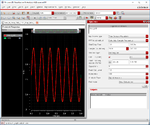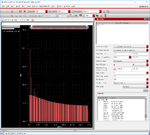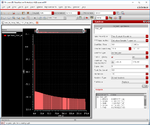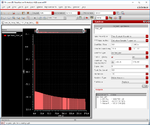Junus2012
Advanced Member level 5
Dear Friends,
My fully differential amplifier is a part of readout circuit in which I need to drive ADC with 10-12 bit of resolution. This mean that the output of my amplifier must provide signal to noise ratio in this range or resolution.
I do a transient simulation and I apply sin signal at the frequency of interest under unity gain connection, then there is a tool by the cadence simulator called "Spectrum" where I can perform the THD from Fourier transform function, it is also giving me the result of the effective number of bits (EFNB), but I am getting like 4 EFNB which is far from of what I expect,
So my questions please are
1. What is the correct simulation setup to find the signal to noise ratio (SNR) at the output of the amplifier ?
2. What is the relationship between the SNR and output referred noise ?
Thank you very much
My fully differential amplifier is a part of readout circuit in which I need to drive ADC with 10-12 bit of resolution. This mean that the output of my amplifier must provide signal to noise ratio in this range or resolution.
I do a transient simulation and I apply sin signal at the frequency of interest under unity gain connection, then there is a tool by the cadence simulator called "Spectrum" where I can perform the THD from Fourier transform function, it is also giving me the result of the effective number of bits (EFNB), but I am getting like 4 EFNB which is far from of what I expect,
So my questions please are
1. What is the correct simulation setup to find the signal to noise ratio (SNR) at the output of the amplifier ?
2. What is the relationship between the SNR and output referred noise ?
Thank you very much
Last edited:








